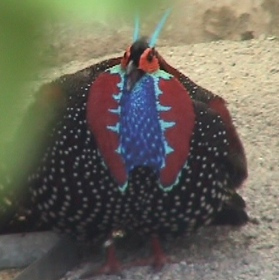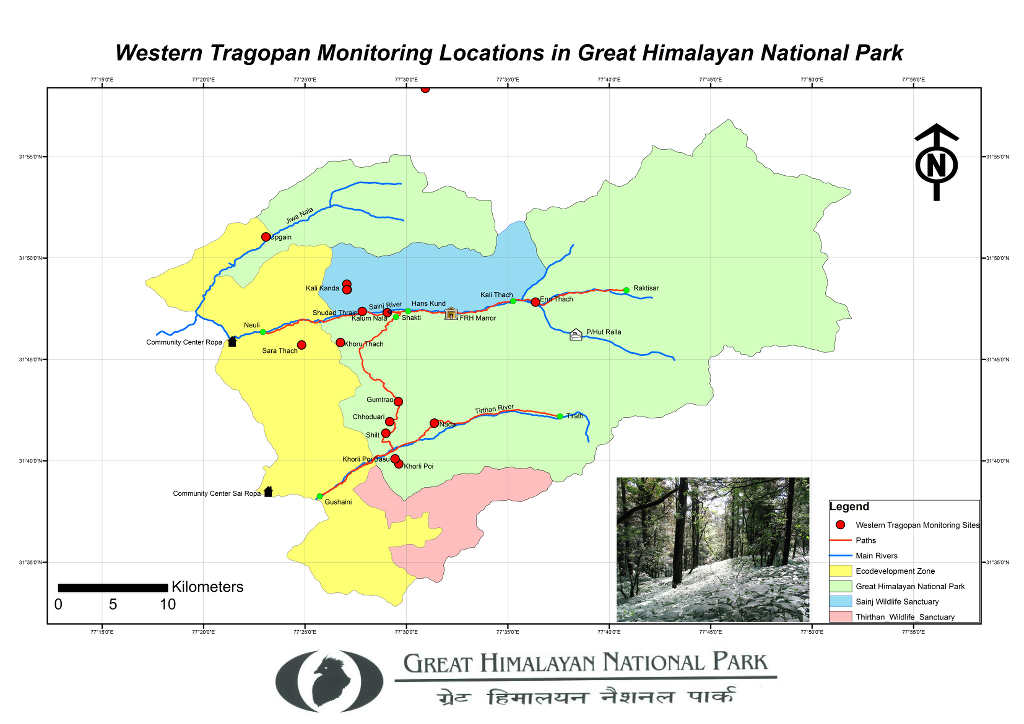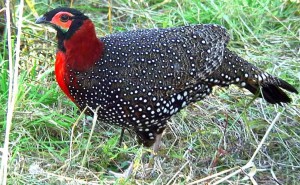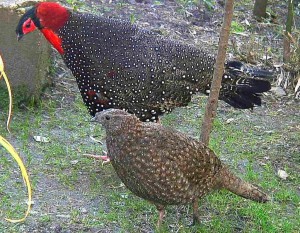
Western Tragopan
The Western Tragopan (Tragopan melanocephalus), also known as Jujurana or “king of birds,” is one of the rarest and most stunning pheasant species in the world. This elusive bird is a flagship species of the Great Himalayan National Park (GHNP) and is celebrated for its vibrant plumage and ecological importance in the Himalayan ecosystem.
Appearance and Behavior
Male Western Tragopans are striking in appearance, with a velvety black head, vivid crimson neck and chest, and dotted white spots throughout their body. During the breeding season, males display elaborate courtship dances and extend their colorful blue and orange facial wattles to attract females.
These birds are shy and ground-dwelling, making them very hard to spot. They are usually active during dawn and dusk, moving quietly through dense undergrowth.
GHNP is recognized as one of the most important strongholds for this species, and tragopans are often used as indicators of forest health in this region.
Breeding and Diet
Western Tragopans breed during May to June, laying 3–5 eggs in concealed nests on the forest floor. They are omnivores, feeding on berries, seeds, buds, shoots, and insects.
Their elusive nature and sensitivity to disturbance make proper habitat preservation crucial to their survival.
Habitat in GHNP
The Western Tragopan is found at elevations between 2,400 and 3,600 meters, primarily in moist temperate forests with dense undergrowth, rhododendron thickets, and coniferous trees. GHNP offers an ideal sanctuary, as its undisturbed, high-altitude forests provide critical breeding and foraging grounds.
The upper part of GHNP’s forest zone holds the world’s largest known population of western tragopan, which prefers a habitat of ringal (dwarf) bamboo beneath dense forest.
Immature males resemble females but are larger in size with longer legs and a variable amount of black on the head and red on the neck. Mature males have a uniquely naked throat, know as a ‘lappet’, which they display during breeding, whilst issuing loud calls to attract females.
The western tragopan feeds mostly on leaves, shoots and seeds, but also consumes insects and other invertebrates. Like most pheasants, it roosts in trees, singly or in pairs, although nesting can also take place on the ground.
Conservation Status and Significance
Listed as Vulnerable on the IUCN Red List, the Western Tragopan faces threats from habitat loss, climate change, and human disturbances. GHNP plays a critical role in its conservation, with monitoring programs, habitat protection, and community-based awareness campaigns actively in place.
The bird is also the state bird of Himachal Pradesh, highlighting its cultural and ecological value.
Tips for Birdwatchers
Spotting the Western Tragopan is a rare experience, best attempted with trained local guides. The Tirthan and Sainj valleys, especially during the early summer months, offer the best opportunities for observing or hearing their distinctive calls.






